Supporting Kids Of Color in The Wake of Racialized Violence: Part One
Experts in conversation with parents and educators.
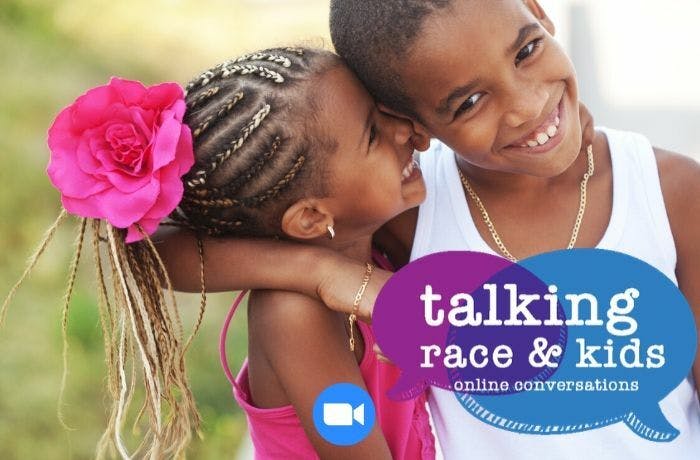
Still relevant, unfortunately, this very first EmbraceRace live conversation happened in July of 2016 in the immediate aftermath of the murders of Alton Sterling, Philando Castile and 5 Dallas police officers. We convened by phone and over 700 people joined the call. For this conversation, EmbraceRace co-founders Andrew Grant-Thomas and Melissa Giraud frame and moderate a discussion between child psychologist Dr. Allison Briscoe-Smith, educator Dr. Sandra “Chap” Chapman, and a group of parents, teachers, and other caregivers concerned about black and brown children.
Listen to the full conversation or read an edited transcript below. Find Part 2 of this two-episode special here.
EmbraceRace: Here’s the backdrop for our conversation. Alton Sterling was shot and killed in Baton Rouge nine days ago after being pinned to the ground by two police officers. Philando Castile was shot and killed by police a day later in Minnesota as he reached for his I.D. And yet another young black man apparently retaliated by killing five police officers and wounding others at what had been a peaceful Black Lives Matter rally in Dallas.
So when we talk about racial violence we’ve unfortunately seen far too much of it and so have our kids. And it’s clear that Sterling and Castile are only the tip of that iceberg — we have lots and lots of examples.
And African-Americans are not the only ones who are being crushed. Think about immigrant families who are living in fear of detention and deportation. Think about kids in those families being terrified about being ripped apart from their immigrant parents. Think about the fact that Native Americans are the racial and ethnic group who are most likely to be killed by police; it’s not African-Americans.
Think about Donald Trump ascending politically not in spite of but largely on the strength of his bigotry, his xenophobia, his rhetoric directed especially against immigrants and Muslim Americans. And that’s not partisan in any way. The links between support for Trump and white racial resentment and some white people’s sense that they’re “losing their country” is very well established. And it’s pretty sobering.
So the question before us is this: how can a caring adults best support kids of color? How can we help kids of color feel safer without over promising, without making them feel fearful? How do we teach them to approach the world with a really healthy and expansive sense of their own possibilities when people of color are in fact so often targeted for harm?
First I want to introduce Dr. Allison Briscoe-Smith who is a child psychologist specializing in trauma and ethnic minority mental health. Allison identifies as black and she and her partner have two multi-racial children who are black, white and Latino. Allison, thanks for being here.
Allison: Thanks for having me.
EmbraceRace: And Dr. Sandra “Chap” Chapman is the Director of Diversity and Community at the at the Little Red Schoolhouse and Elizabeth Irwin High School in New York City. She identifies as Latina and the proud mother of two Little Red Schoolhouse students. Chap, great to have you.
Chap: Thank you, Andrew and Melissa.
EmbraceRace: Allison, what are you seeing from the kids you work with, maybe even from your own kids?

Dr. Allison Briscoe-Smith is a child psychologist and professor specializing in trauma and ethnic minority mental health at the Wright Institute in San Francisco.
Allison: What I’m seeing includes things like increased anxiety, a little bit more worried if not a lot more worried about the safety of each other, the safety of our friends and family. We also see and saw toward the end of the school year evidence for increased bullying and teasing towards black and brown kids. There’s a report by the Southern Poverty Law Center that found both more specific levels of teasing but related to, as you mentioned, this anti-immigrant rhetoric. But also other things are coming in in terms of threats and bullying. And we’re also finding increased rates of anxiety for kids of color and I think the events of the past few weeks have reached increased levels of anxiety and distress for our children.
EmbraceRace: Chap, what are you seeing in the school context?
Chap: We’re [hearing from] both parents of color and white parents — but it’s [mostly] our parents of color. We have a pretty tight knit Parents of Children of Color Affinity Committee, and those families have been communicating with the school to let us know that this is on their child’s mind, this is on their mind, and they’re hopeful that the school is already thinking about how to take action come September. Because in September their children are ready to come together with their peers and talk about these conversations. We’re a school that’s four year old through 12th grade. And while the younger students are not necessarily going to come to school prepared on September 1st to really have this conversation, the teachers are really thinking about how to frame the conversations.
“The general anxiety of what’s happening in our country becomes a personal anxiety, like wow, is it possible that this could happen to me?”
Dr. Sandra "Chap" Chapman
EmbraceRace: I wonder if you could each say a bit more about your approach to the anxiety that you’re seeing or anticipate seeing. What’s your approach in broad strokes? Chap, let’s start with you.
Chap: So one of the things that becomes really real for students of color, particularly our black boys, but generally for students of color is, will this happen to me? Will this happen to somebody I know? Will this be closer to home? Couple that with conversations that parents are having with their children around how to protect themselves, how to be safe in the city, how to navigate interactions with the police, how to interact, engage in just daily life situations. The general anxiety of what’s happening in our country becomes a personal anxiety, like wow, is it possible that this could happen to me?
And then there’s that relationship with the family. Kids are really worried about their parents and I think that that’s something to tease out as well. How am I going to feel safe if you’re really worried about my safety? Who is going to be there to protect me if I have to put my hand around your shoulder because you’re really upset? Of course, that level of sadness should be communicated. But there are times when we want to really think about what it is that my child needs from me right now, what kind of affection can I share? What kind of protection do I need to provide for my child? And then how do I provide answers and correct misinformation for my child in a calm way?
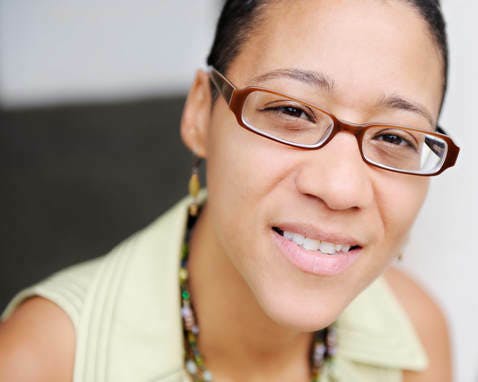
Dr. Sandra “Chap” Chapman is the Director of Diversity and Community at the at the Little Red Schoolhouse and Elizabeth Irwin High School in New York City
EmbraceRace: When you’re in school talking to teachers, how do you help them satisfy sufficiently the range of perspectives they have to deal with?
Allison: [There] is quite the tension between what teachers feel they want to do, and what they should do, and what they can do. They might be teaching in a context that actually is not supportive of holding particular conversations, or rather holds an expectation that conversations about racial equity and justice happen but then they don’t feel equipped to do it.
What I encourage all people to do, all grown folks responsible for taking care of kids, is to first begin with the assumption that we do have to talk about what’s going on. That not talking isn’t an option. In part because kids are smarter than we give them credit for. They’re seeing and noticing the world around them even if they’re not watching the news and they’re seeing and they’re understanding our distress or they’re going to make sense of it. So I start first with the premise of you have to talk about it.
Second is I really encourage folks to get aligned with their mission and their vision. I work with families to create statements on racial equity and justice but I got that basically from working in nonprofits and schools that actually do have things like statements on diversity and equity. So I encourage teachers to actually figure out whether or not their school has a statement or a stand. And if so, what does that mean and what does it look like?
And then the other piece is to have people think about and do their own work on themselves. How comfortable are you talking about these issues? How scared are you talking about these issues? How are you feeling and doing and taking care of yourself?
Lastly, I really encourage folks to think about validating kids experiences. Telling kids to not be scared isn’t true. It’s a scary anxious time. So validate kids experiences and emotions. Connect with them. Relationships are central in kids feeling better and healing. And then strategize. Talk about what it is that we can do.
So whether it’s simple things like answering their questions or being curious with them or coming up with actual strategies for self-care, reducing anxiety, or doing things to help them feel like they can affect change in the world. Anything from writing a letter, having a playdate, to spending time with you — it could be any of those things. But that’s the kind of process I would take teachers, caregivers, anybody, through.
“Schools need to take responsibility to educate parents about how children learn difference. How young it starts, the messages they hear around gender and race and skin tone and ability are pretty clear in society.”
Dr. Sandra "Chap" Chapman
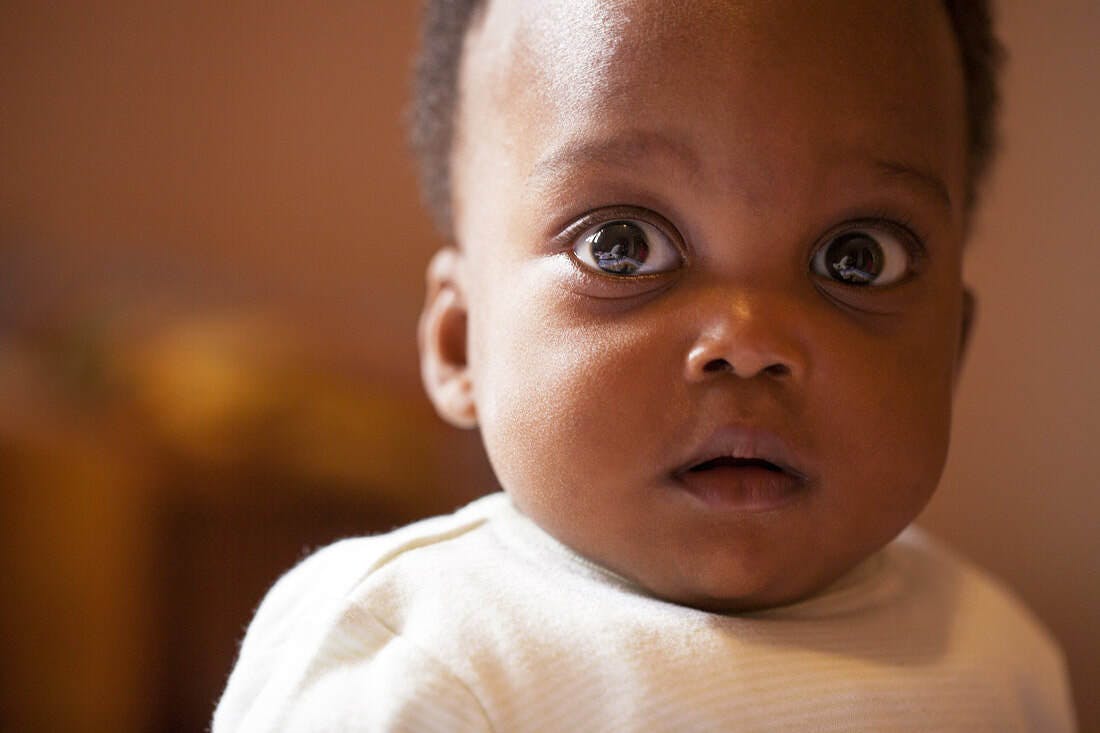
EmbraceRace: Chap, I want to pick up on the very basic point, assertion, that Allison started her last answer with about the need to talk about it, the need not to avoid it.
Can you say something about how kids at different ages express their anxiety around these things? And then some general guidelines around how we respond to that anxiety depending on the age of the child
Chap: So I think the way I want to first start the conversation is to say that there’s sufficient research to support that children aren’t colorblind. And there’s enough research to support that children between ages two and four are absorbing so much of social constructs. They’re taking it all in. A fabulous woman who I rely on a lot for early childhood understanding of anti-bias work is Louis Derman-Sparks and she talks about these really young children — two, three, four, five year olds — being in a pre-prejudicial stage. They’re just taking in all the society has to offer and they haven’t quite formulated their ideas yet. By age five and six, your kindergarten student has already begun to categorize people based on these social norms and to move into, slowly move into, acting on those, and that’s where pre-prejudice becomes prejudice. So the role of parents and educators to counter that work in the early childhood stages is crucial.
In the behavior of children who aren’t even quite verbal yet we notice avoidance. A white child might respond to a child of color that way. So they will avoid dark skin, brown skin. They will avoid the teacher of color. They will avoid the child of color, not want to hold the child’s hand and that’s sort of how. And there is nothing verbal even communicated.
Or it might be the child of color that is trying to wash away their brown skin. You know washing and washing, “my hands are dirty, my hands are dirty.” So we’ve heard these stories from young children as they’re processing skin tone, race, racism, and those are huge concepts that they haven’t quite made sense of. But they’re emulating some of those beginning ideas.
So that’s where the home and school partnership is key. And schools I think need to take responsibility to educate parents about how children learn difference. How young it starts, the messages they hear around gender and race and skin tone and ability are pretty clear in society. The counter messages that we want to be able to deliver have to be done consistently, and through affirmative language, affirmative imagery, and then taking action when a child is confronted with some form of a bias or pressure.
EmbraceRace: How do we talk about what’s important for a child to understand without giving the child too much information that he or she may not be equipped to handle?
Chap: So you want to be able to know where your child is. What information do they have? What questions are they asking? What misinformation can you clarify right away? And then how do you provide a sense of safety in some of those answers.
Start with the child and asking simple, open-ended questions. You want to get a context for understanding how much was shared by this other child, were there other adults around? And what does a child know, what does the child think they know? Starting with their questions is really important because you want to be able to correct any inaccuracies, you want to be able to answer questions that they have that are based on fear of could this happen here, could this happen at home, could this have happened in our town? And then talk a little bit about the safety measures that are in place. These are the actions that adults have taken and will continue to take to create a safe community for you. These are the teachers who are there to protect you. This is how we get to school and how we watch where we’re crossing the street so that we’re safe.
I also think it’s really important that parents and educators don’t feel like the conversation has to be addressed and fixed in one sitting. This is decades of conversations and work. The immediacy is around what the child is bringing home.
“We do race every day. We do gender everyday. We do all of these pieces. And it shows up again in terms of who we speak to. How we interact with others. Our circle of friends. And it comes up for a kid in terms of how they’re seeing [and] making sense of the world around them.”
Dr. Allison Briscoe-Smith

EmbraceRace: When Melissa and I talk to people about and what we’re trying to do [with EmbraceRace], one reaction we get is, “Well that’s great. I as a parent, I as a teacher, am very interested in knowing more about how to talk about race with the children I work with or with my children.”
To which I say, yes, and that’s clearly very important and we’ll be very interested in that question of literally what you say to your child. But if the question is, what are all the inputs that go into shaping the way your child thinks about race, feels about race, the kind of analysis your child has around race, well, then it’s much more than simply what is literally said to the child. Could you say a little bit, either or both of you, about what some of those other inputs are that we need to be attentive to?
Allison: Sure, and I think it dovetails nicely with the conversation that we’re having about when and how to both talk with kids, but also this other idea about when to DO race with kids.
We do race every day. We, people of color, white folks, do race every day. And we do it in terms of how we connect with each other, who our circle of friends are, who we spend time with, and also our implicit biases. While we may have conscientious thinking about how we would like to be non-biased or anti-racist in our behavior, we have lots and lots of behavior that is outside of our consciousness. And the evidence that we have about implicit bias is that we have biases towards people of color that manifest in our interactions. Evidence shows that people who’ve got negative implicit bias toward African-Americans are more likely to make speaking errors [in conversation with them], have more levels of eye blinking, and sit further away from black folks. Totally outside of their awareness. So if the question is how are, or what are the things that are going on, I’d like for folks to just think about .. we do race everyday. We do gender everyday. We do all of these pieces. And it comes up for a kid in terms of how they’re seeing and making sense of the world around them. As Chap mentioned and as research substantiates, kids are noticing and doing race very, very early.
And in fact if there’s a developmental question about how to talk to little kids about race or how to talk about these recent difficult and horrific incidents, there are developmentally appropriate things that we can talk to them about. Like turning to my 5-year-old daughter and saying, “You know, it seems as if a lot of people aren’t treating each other nicely. What do you think about that?” That’s not turning to her and saying, “Hey, do you want to watch this video of someone dying?” It’s not the same thing, but it’s still a space to talk about and frame and engage in this conversation with little kids. It’s possible and I actually think it’s necessary to help kids especially kids of color navigate this toxic smog and these negative messages that are being sent to them all the time.
Chap: Agreed!
EmbraceRace: I’m very thankful for the community that’s on this call tonight. Many of you sent in questions ahead of time, so let’s start with those. You sort of answered this but there’s a tone to this that would be good to address. This parent says: “Our twins are 19 months old and too young to understand why mama and daddy were so weak. When do we start talking to them about being black in America. How do we give them the truth without damaging them.”
So that’s the worry a lot of us have is, are we teaching our kids to expect less of themselves because others do?
“I think it’s really important that we always connect our children to our stories of hope and resilience. Because that’s the reality. You know I’m here as a black woman because people before me have survived and have thrived.”
Dr. Allison Briscoe-Smith
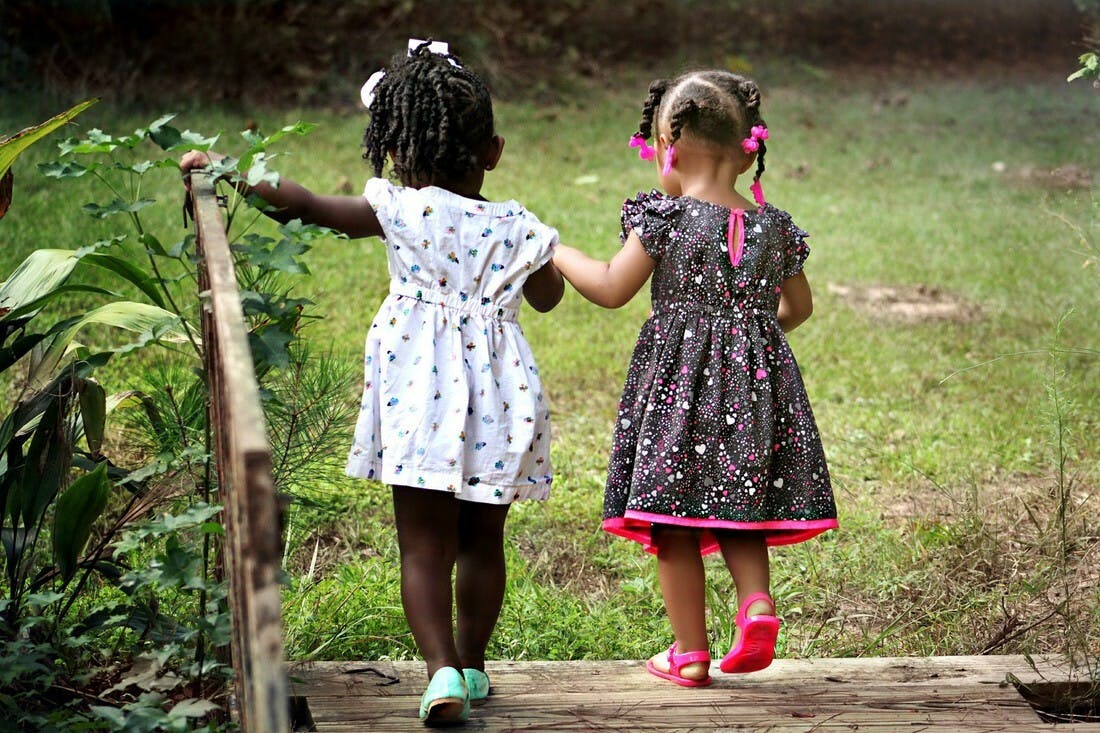
Allison: I really appreciate the framing of this question, the question being asked, and really don’t want to minimize [the] concern … I’ve definitely worked with parents who say, you know I don’t want to take away innocence from my children, I don’t want to set negative expectations, I don’t want to teach them how to internalize these negative beliefs. So I really hear that.
And I really want us as parents to think about, what is the thing we are afraid of, what it is that we were afraid of saying to our kids? And that a lot of parents would tell me, I’m afraid of damaging them or breaking them. And my response to that is I think what is damaging is to have this conversation not with me. To have this conversation framed by somebody else. To have this conversation at the end of a pistol when they’re 19, not before that when I have the opportunity in my relationship to do it with them. So I know I’m speaking really from the personal here but I really want to encourage folks to think through what is the worst case scenario that you are worried about? We always have the opportunity to frame and I think it’s through our experiences as parents of color to talk about what’s going on and I would say, even with a 19-month-old or a 2-year-old, “Mama has big feelings right now. I have big feelings because I’m worried about stuff that’s going on. But it’s ok, I’ll be alright, and I’ll be able to give you a hug.” So I frame both where I am emotionally but also remain in contact and relationship as well because that’s what they need. We can start with those little pieces.
The way I think about it “making a way out of no way.” I think it’s really important that we always connect our children to our stories of hope and resilience. Because that’s the reality. You know I’m here as a black woman because people before me have survived and have thrived. We have a black president, you know not to say that we’re in a post-racial moment that’s all good. But a moment to kind of say we can be OK and we can survive this and we can get through. So I think it’s really important even with little ones to say and connect them to very concrete and very close examples of the ways that we have survived and thrived. So narrate that. Your 19-month-olds will know when you’ve got big feelings or know when you’re tired and upset. So why not have the opportunity to narrate it and also connect them to the fact that we will be OK?
You want to strike a balance between positive affirming language [and] people in their lives, and a sense of hopefulness with, "Yes, stuff like this happens.”
Dr. Allison Briscoe-Smith
Chap: Ditto! For families of color raising children of color, or white families raising children of color, the affirmation of racial identity begins in the home. The affirmation in images, stories, people that you know, the communities that you hang out in, the people you consider your ancestors, the role models — current, past — the people coming up the pike. The cousin next door. There are people in those 19-month-olds’ lives that are affirming positive strong role models. And that’s a really powerful place to start. Positive affirmation can always be used to counter some of the stuff that they’re going to take in from society around what’s not so positive.
And I also think about different ways to think about racial socialization. There’s the active racial socialization. So when my daughter was really young and interested in dolls we actively looked for black dolls, brown dolls and actively told our friends that those were the dolls that she needed to play with so that she could see herself embedded within the toys that she played with, whether it was puzzles or dolls or action figures.
Then there’s the reactive socialization we would go to the toy store and notice that the white dolls were at the front and the black dolls were either nonexistent or in the back. And I would say to her — she was 2 and 3 and 5 — where are the black dolls that look like you? Let’s find them, let’s see if the store owner knows where they are. Let’s move some of them in the front so that the next little child who comes to look for the adult can find the brown dolls when they’re looking for them.
I’m reacting to racism in her little world and showing her that there’s something we can do about it. We can tell other people what we feel is really important for us and that we want this store to have the representation of her when we come to this neighborhood store of ours.
When you instill racial pride but don’t help children understand systems of oppression, or systemic issues around race and racism, that’s not fair for the child. They don’t feel equipped to deal with racism when they find it on the microlevel, micro-aggressions, the subtle ways. But if you do too much racial socialization around preparing them for racism they feel hopeless. So you want to strike a balance between positive affirming language [and] people in their lives, and a sense of hopefulness with, “Yes, stuff like this happens.”
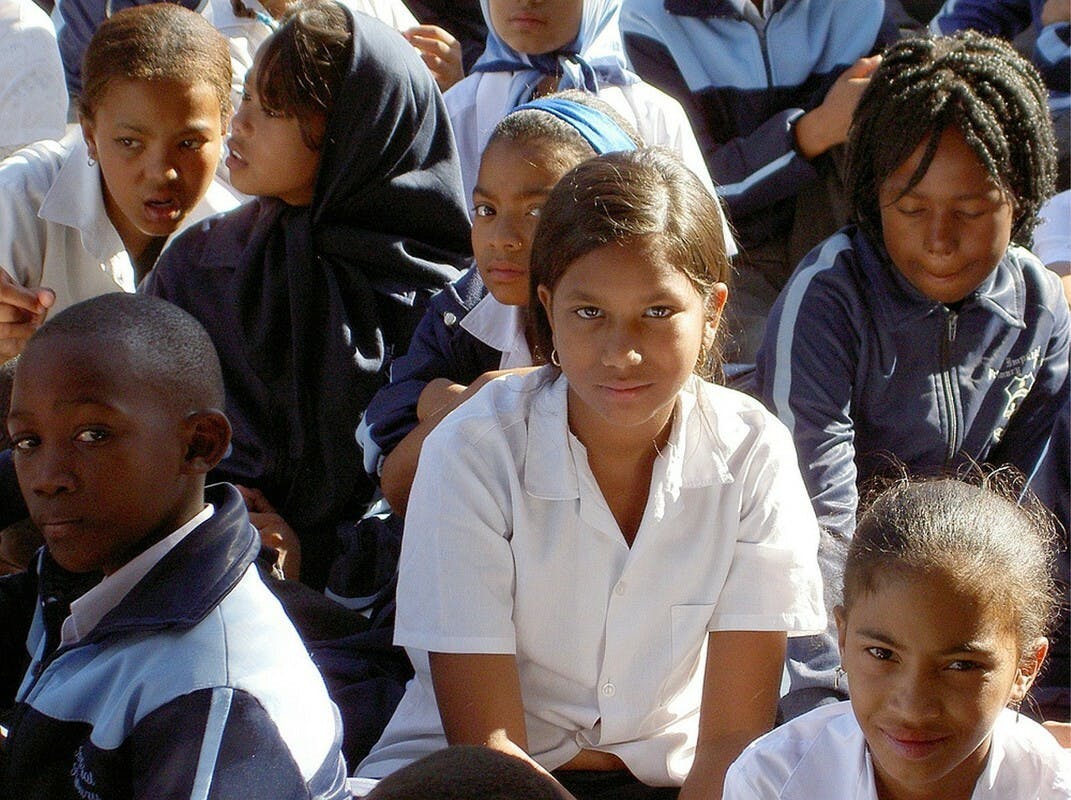
EmbraceRace: We’re getting a question here about what parents and guardians of kids of color can do to encourage and support teachers and school administrators to create inclusive, affirming community for kids of color, too. How to move the conversation and even change the school community?
Allison: I think there are a number of different options, one of which is to begin to have difficult and challenging conversations with the people that we have relationships with, like our children’s teachers or like the principal of the school, like administrators. Sometimes unfortunately, we have to do a lot of work actually to convince folks that centering experiences or conversations about race are actually necessary for the school environment. But thankfully there’s robust and consistent evidence that shows that when equity is brought into the classroom all children do better. So if the case need’s to be made it’s there.
The other piece I really encourage folks to do is to form parent affinity groups and use those groups to become part of PTAs or whatever the government is within the school, to leverage those voices. There are all kinds of opportunities to basically use community organizing to say, this is what’s important for not only my child’s learning but for our community as well.
EmbraceRace: We’ve got a live question from the community. Masharika, go ahead, you can ask your question.
Masharika: Thank you. So I identify as black and my partner identifies as white. We’re raising two biracial boys. And I’ve noticed that my 5-year-old recently has begun to make comments in which it appears that he’s self-selecting to identify with his whiteness almost to the fault of dismissing his blackness. And I’m just wondering how I as a parent can celebrate his blackness and reaffirm his blackness in those moment without in any way making it appear that he should not also be celebrating his whiteness as well and all of the wonderful cultures that make him who he is.
Allison: I am not surprised that kids who have mixed race experiences growing up the United States have moments or times of choosing one side, choosing another side, and then ultimately choosing kind of both — there’s lots of different kind of research it’s beginning to pay attention to this process.
We also have to think about how, in the current climate, that actually affiliating with white may be a defense mechanism, it may be a means of trying to figure out how to be safe. And I don’t want to ever take that away from kids. The things that they do to try to keep themselves safe. And I really do think it’s a yes/and. So yes, you are white like daddy, and, yes, you are black like mama. And the best thing that we can do are have the opportunities for both your partner and yourself, or me as the black partner in my relationship — my partner is white and Mexican — to have us both express a confidence within our own racial identities to be able to speak about it, to be able to narrate it, to show it, to connect up with our stories.
It also is really helpful to actually create a space to think about mixed race or mixed heritage identities and we at EmbraceRace have on a number of resources that point to that. Books, movies, you know other opportunities to see both of your boys represented can be really quite helpful.
I also really encourage parents to know that these things come and go. That the ways that they identify now are most likely not going to be the way that they identify 20 years from now, or even five years from now. But to be able to talk to your children about the developing and the changing ways that they’re going to view themselves. A lot of this is going to vary with how they are “read” by others but also a lot of this is about how you want to support them and feeling about themselves and what kind of a narrative you have within your family about, what does racial identity mean for you and your family?
So I appreciate that as a parent you are noticing and you’ve already articulated that you want them to be connected with their white heritage but also your heritage as well. You’ve already set a frame to do that for your kids and noticing out loud or wondering out loud or even bringing in opportunities for them to see representations of others might be another way to continue that conversation.
“The same process is true that we probably are sophisticated in doing already with things like gender. We’re probably saying things to our kids like ‘well girls can do that, too’ which is actually our means of separating out and not over generalizing and countering biases.”
Dr. Allison Briscoe-Smith
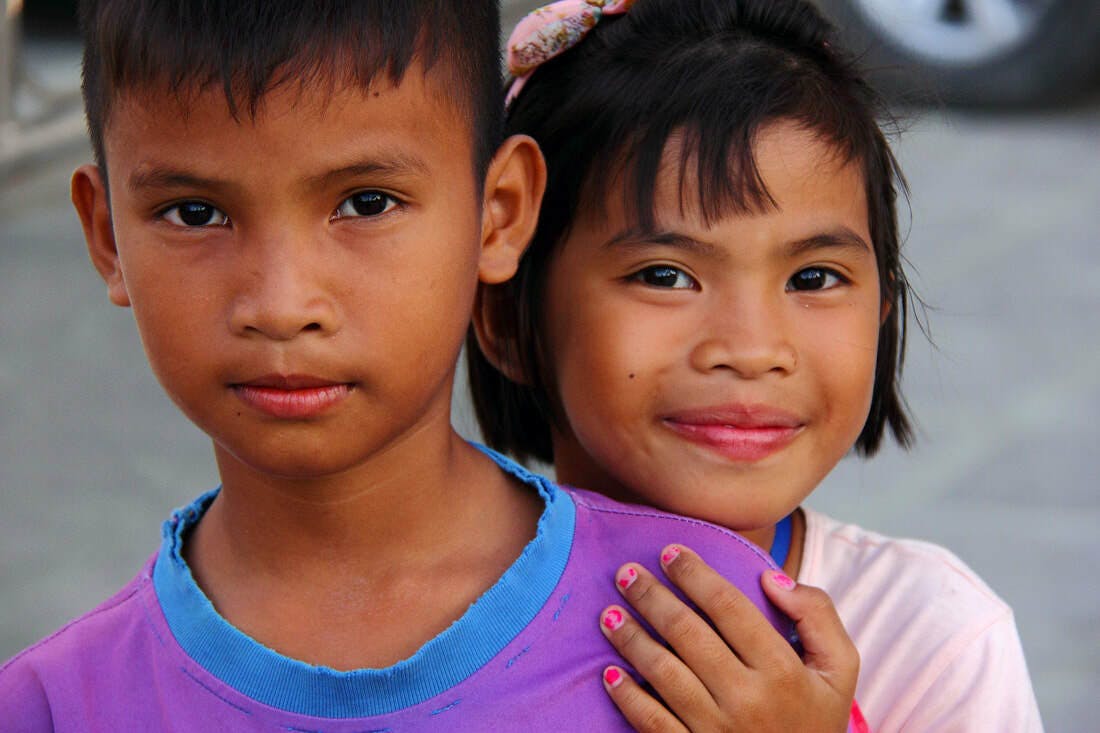
EmbraceRace: I have a last community question here that I’m going to read because it was written in. This community member says she fears that her child is becoming afraid of white people and wonders how to address that?
Chap: Part of what I would want to know is, does this person have relationships with white people? Similar to when white children have fears of people of color, I often talk to children and to parents and to educators about building authentic relationships across those racial differences. To do some, what we call, individuation. Let’s talk about this white person that we know. What’s the relationship we have with them? What are the things that we like to do with them? Rather than having them lumping one person’s experience, the white police officer, with all white police officers or with all white people. We don’t want the one black person who did a shooting to be lumped with all black people. So we want to individualize. [Use] talking about the relationship that’s happening with individual white people that you know as one stepping stone.
EmbraceRace: Allison, anything to add?
Allison: Well I really agree and you know, part of this is the age, that little kids will tend to generalize. That’s what they do, not just in the case of race but in the cases of just how they’re making sense of categories. So we can ask them questions about … do you know any white people that are nice? OK, yeah, I know that white person that’s nice. OK, do you know any white people that are mean? Yeah I do. So they kind of go back and forth. And the idea is that as we can actually do that with them to help them not overgeneralize.
The same process is true that we probably are sophisticated in doing already with things like gender. We’re probably saying things to our kids like “well girls can do that too” which is actually our means of separating out and not over generalizing and countering biases. So think about the ways in which we’re already practiced at having that kind of conversation and bring it in here. Wondering with their children, asking them questions, and pointing out relationships that they might be having with others that actually will disabuse them of that kind of notion. While at the same time, understanding and appreciating that fear makes sense in many ways.
The anxiety and fear that our kids in our families and even our selves are going through is not irrational. And we have the opportunity to connect across differences to enable us to move forward.
EmbraceRace: Thank you, Dr. Allison Briscoe-Smith and Dr. Sandra “Chap” Chapman and to this community for your insights and time and for being willing to be on this hastily arranged, last-minute call.
Find part two of this conversation here.

Allison Briscoe-Smith
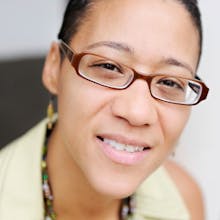
Sandra "Chap" Chapman
Get Insights In your Inbox
Join the EmbraceRace community! You will receive the newsletter with our latest on race & kids, including upcoming events and opportunities, resources, community news and curated links.
Subscribe


